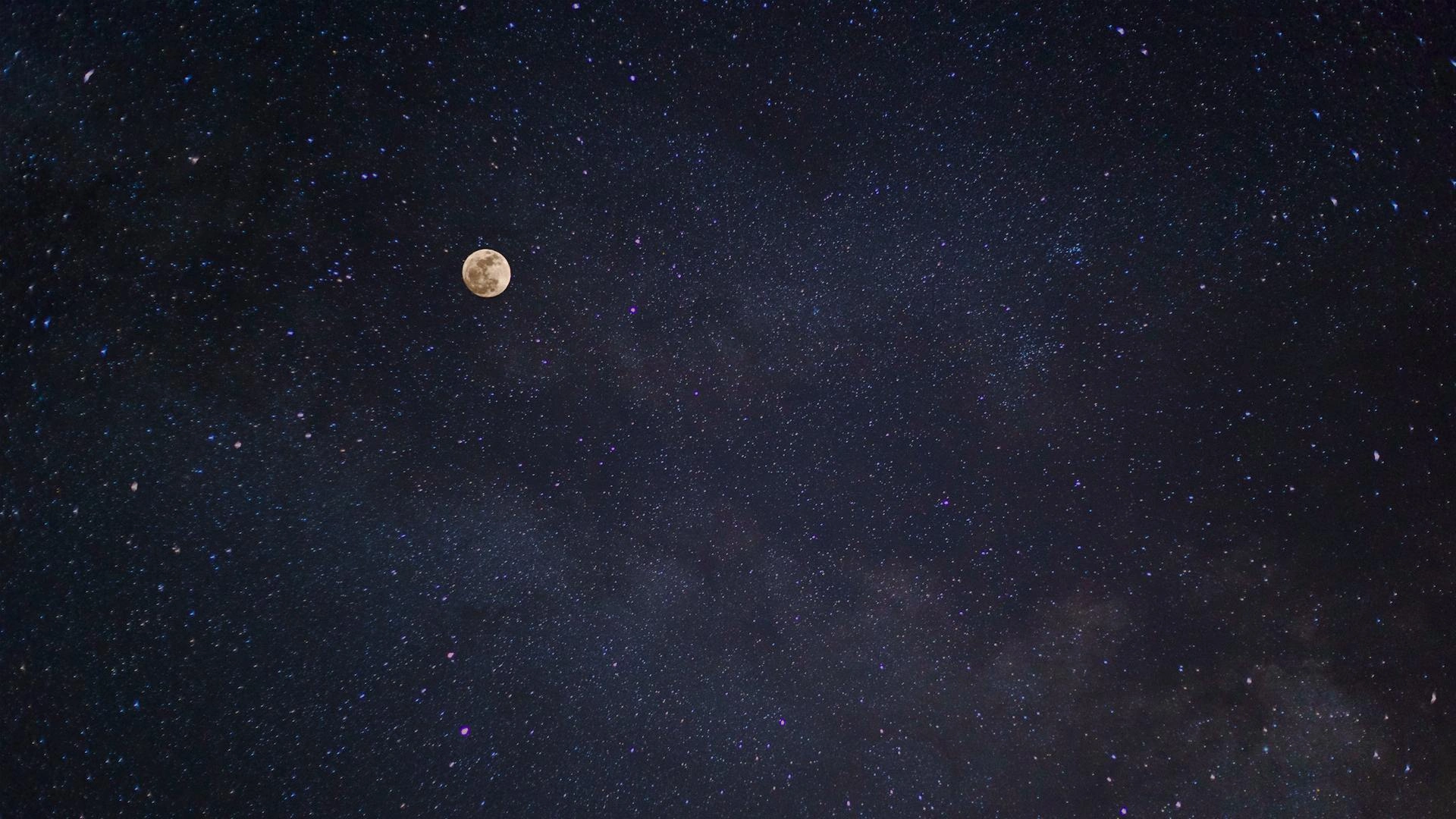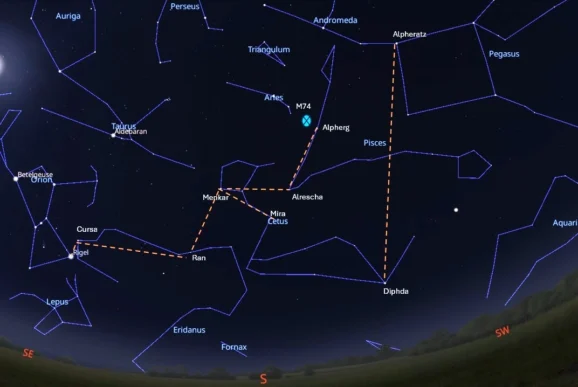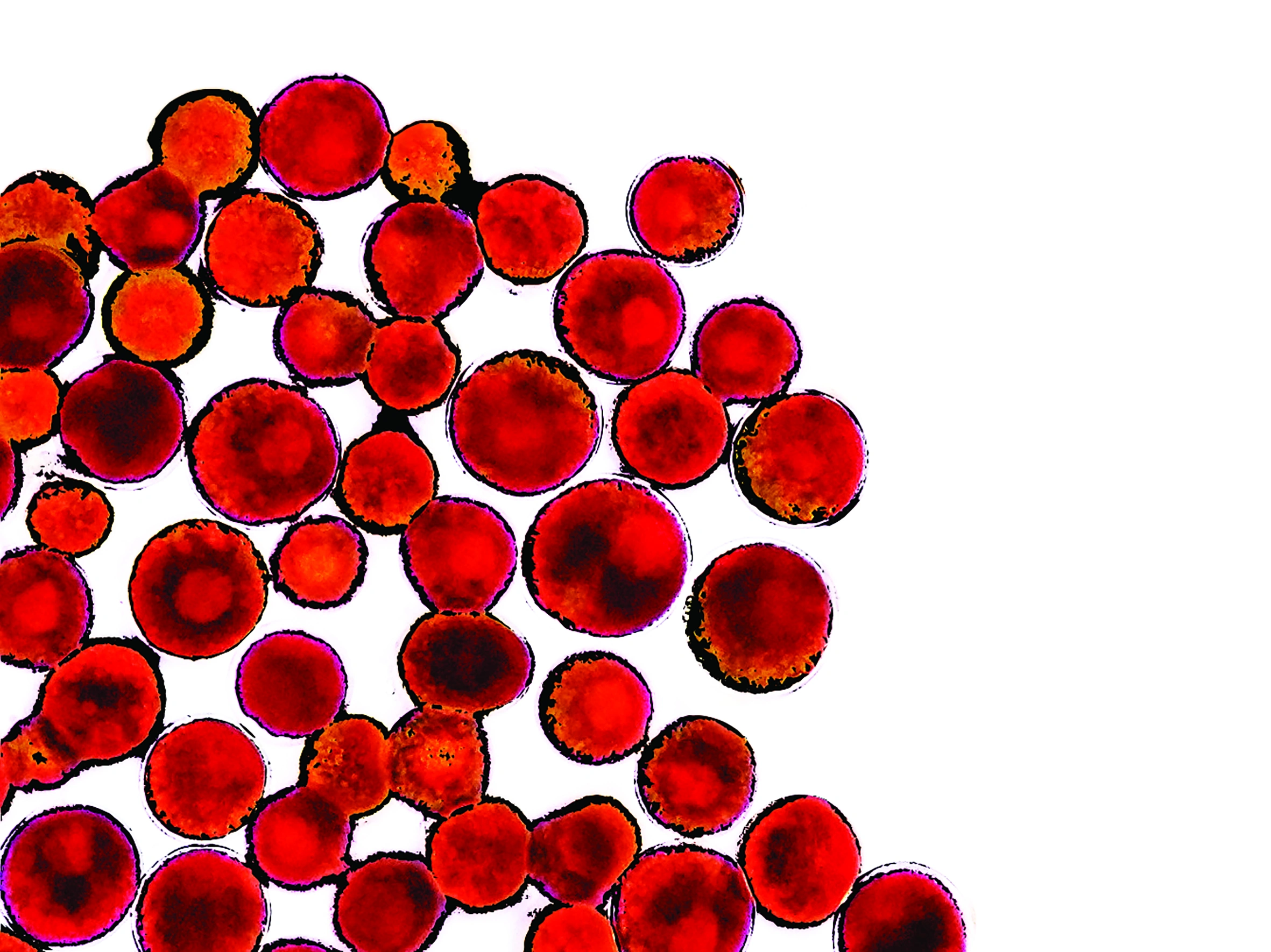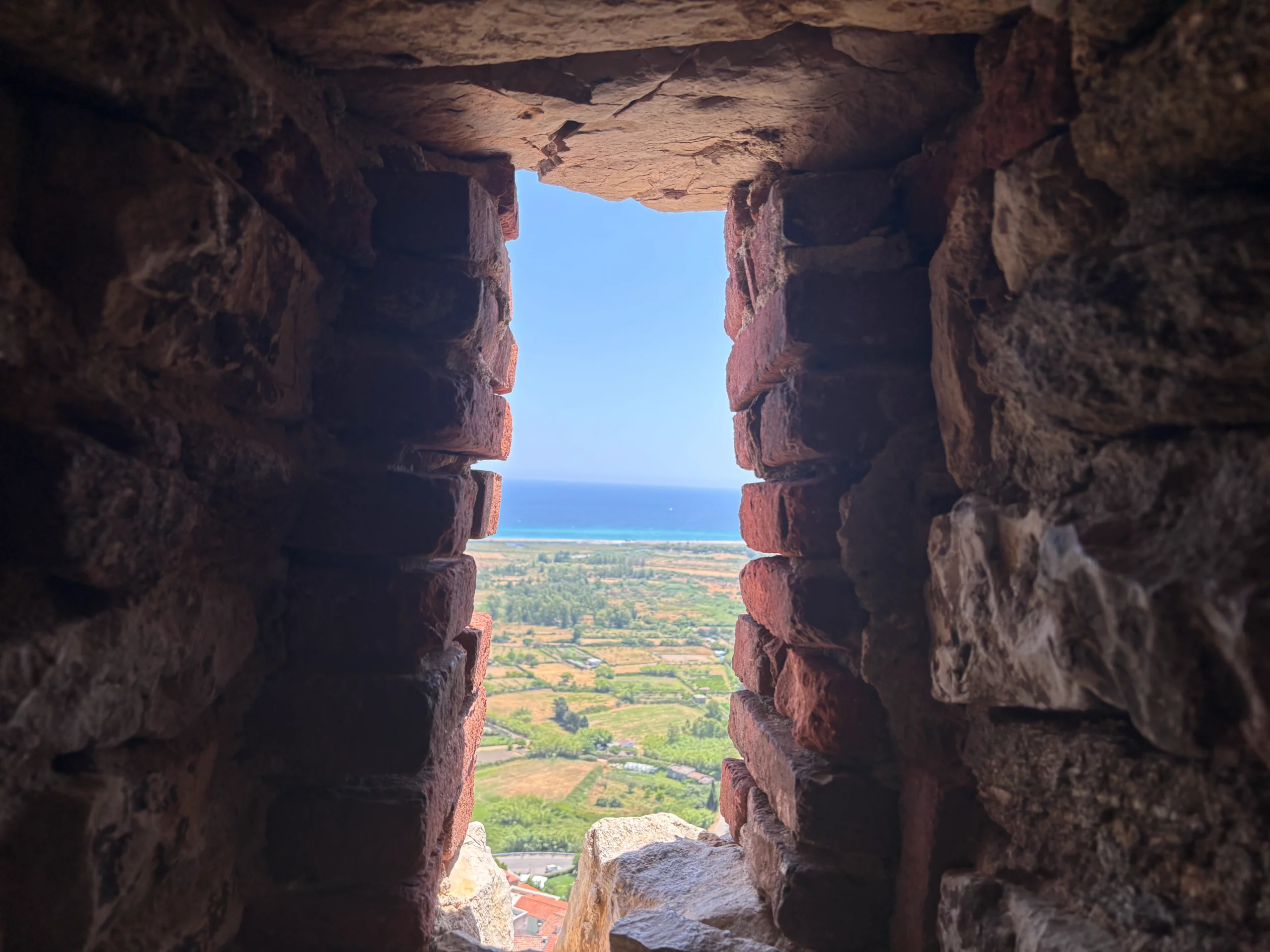Stars, supermoons and shooting fireballs: why November’s sky is unmissable

Omara Williams
- Published
- Lifestyle

In the eighth of her popular stargazing series, author Omara Williams turns her telescope towards the November night sky — a month of frosty evenings, glittering stars and a few cosmic surprises
There’s something magical about stepping outside on a crisp November night. The air feels sharper, your breath hangs in the cold, and above you the stars seem to shine with extra determination. This is the season when the heavens really put on a show — when bright constellations like Orion the Hunter and Taurus the Bull climb high above the rooftops, lighting up the long evenings like diamonds scattered across black velvet.

But the real thrill this month lies beyond the obvious. Peer a little deeper into the southern sky and you’ll find a hidden world of celestial treasures. There’s a river of stars winding through the constellation Eridanus, a fiery red giant called Mira that rhythmically brightens and fades, and even a distant galaxy nicknamed the Phantom — a ghostly swirl of starlight millions of light-years away.
And November doesn’t stop there. The month brings the biggest and brightest Supermoon of the year — the so-called Beaver Moon — glowing so large it seems close enough to touch. Two meteor showers, the Taurids and the Leonids, promise to send fireballs streaking across the sky. Saturn and Jupiter are both on show, and the Milky Way stretches faintly from horizon to horizon, a reminder that we’re part of something vast and astonishing.
You don’t need fancy equipment or expert knowledge to enjoy it all — just a warm coat, a clear night and a few minutes to look up. Whether you’re spotting planets from your back garden, counting shooting stars with the kids, or simply taking a quiet moment under the stars, November’s night sky is full of reasons to step outside and be amazed.

Find Cursa and Ran in Eridanus
To the right and below of Rigel, the brightest star in Orion the Hunter, lies the fainter yet extensive constellation of Eridanus the River. It is the sixth-largest constellation in the night sky, appearing like a pearly winding river across the southwestern sky.
The most prominent star in Eridanus, and the ninth brightest star overall in the night sky, is the blue giant Achernar, part of a binary system. This shining star marks the end of the River, but sadly, it is not visible from northern latitudes. However, other remarkable stars within Eridanus, such as Cursa (Beta Eridani) and Ran (Epsilon Eridani), rise above the horizon, inviting us to explore this fascinating celestial River.
Beta Eridani, commonly known as Cursa, is a blue-white giant star 25 times more luminous than our Sun and located 89 light-years away. You can find it to the right and above the bright star Rigel, near the foot of Orion the Hunter. The name “Cursa” means “the footstool.” It is the second brightest star in the Eridanus constellation.
Continuing along the River Eridanus and down its elongated slope, we find the famous star Epsilon Eridani, also known as Ran. This orange dwarf star is believed to host at least one Jupiter-like planet. Surrounded by swirling dust disks and asteroid belts, Epsilon Eridani offers astronomers a unique opportunity to study a planetary system like our own Solar System. At only 10.5 light-years away, Epsilon Eridani is the third-closest star visible to the naked eye, after Alpha Centauri and Sirius.
Find Menkar, Mira and Diphda in Cetus.
To locate the red giant star Menkar, which marks the nose of the sea monster in the Cetus constellation, start from Ran (Epsilon Eridani). Draw an imaginary line upward and slightly toward the southwest. Menkar is a massive star with a luminosity 1,500 times that of our Sun and located 250 light-years away.
At the neck of the Cetus and to the right and below Menkar lies the most famous star in this constellation, the pulsating red giant Mira. Known as “the Wonderful”, Mira is part of a binary system and one of the first regular variable stars ever discovered. Its brightness varies dramatically, ranging from invisible to easily visible to the naked eye over 11 months. Mira undergoes cycles of expansion and contraction, changing in size about 400 to 500 times that of our Sun, 300 light-years from Earth.
At the tail of the sea monster and at the southern end of the constellation, we find Diphda, the brightest star in the Cetus constellation. It is easy to find, situated south of the bright star Alpheratz, in the upper left corner of the Great Square of Pegasus. Diphda is 90 light-years away and has a diameter 16 times that of our Sun, shining with a luminosity 145 times greater.
In Greek mythology, Cetus is a sea monster that Perseus defeated while riding his winged horse, Pegasus, to save Princess Andromeda. Cetus also represents the monster that Heracles had to slay to rescue Princess Hesione of Troy. These tales of the Greek heroes Perseus and Heracles highlight their strength, determination, and bravery as they confront formidable forces.
Find Alrescha and Alpherg in Pisces
Looking south, locate Menkar in Cetus and draw an imaginary line to the right to find the star Alrescha, at the centre of the sprawling but rather faint Pisces constellation. Located 150 light-years away, Alrescha is a binary system where both white stars are hotter, larger, and more massive than our Sun. This star’s position within the Pisces constellation symbolises the connection between two celestial fish, linked together by their tails.
Above Alrescha and slightly to the right, you’ll find Alpherg, the brightest star in the constellation. Located 350 light-years from Earth, Alpherg is a binary star system with a yellow giant as its primary component. This star lies along the boundary that separates the constellations of Cetus and Pegasus.
To the left of Alpherg lies M74, also known as “The Phantom Galaxy”, a stunning face-on spiral galaxy and a favourite for amateur astronomers for its photogenic qualities and challenging observing due to its low brightness. M74 is a prime example of a grand-design spiral galaxy, featuring prominent and well-defined spiral arms filled with colourful gas and dust. Often called the “perfect spiral,” M74 is a cosmic pinwheel that helps us understand the structure and evolution of spiral galaxies like our own.
In Greek mythology, the Pisces constellation is linked to the story of Aphrodite, the goddess of love, and her son, Eros. To escape the monstrous giant Typhon, they fled to the Euphrates River, transforming themselves into fish and tying their tails together with a cord to ensure they wouldn’t be separated.

Night Sky Events in November
November showcases the largest and brightest Supermoon of the year, known as the “Beaver Moon,” surpassing the October “Harvest Moon” as the Moon reaches its closest distance to Earth. This month, the night sky will be filled with spectacular sights as the Moon passes by the bright planets Jupiter and Saturn, along with stunning star clusters. Additionally, there’s a chance of witnessing a meteor storm, with thousands of fireballs illuminating the sky.
November 2 – Moon near Saturn
The waxing crescent Moon is above and to the left of Saturn after 5 p.m. on the eastern horizon. The two shine brightly close together until 2 a.m. under the constellations Pegasus and Pisces.
November 5 – Full Moon (Beaver Moon)
The Full Moon rises in the eastern sky after 4 p.m. Named for the time when beavers are busy building their winter dams, this is the closest and largest Supermoon of the year.
November 6 – Moon near Pleiades
The waning crescent Moon is positioned to the left of the dazzling Pleiades star cluster and above the bright star Aldebaran in the Taurus constellation. This beautiful sight can be observed in the eastern sky after 7 p.m. It’s a sparkling gathering not to be missed!
November 10 – Moon near Jupiter and the Beehive star cluster
The waning crescent Moon is positioned above the Beehive star cluster and under the twin bright stars Castor and Pollux in the Gemini constellation while shining below and to the left of bright Jupiter. To see this stunning display of celestial jewels, look towards the eastern sky after 9 p.m. and prepare to be amazed.
November 12 – Peak of the Northern Taurids meteor shower.
The Taurid meteor shower, caused by debris from Comet Encke, often features larger meteors that survive longer as they enter Earth’s atmosphere, resulting in a spectacular display. To view the shower, look high in the southern sky after midnight, above the bright star Aldebaran in the Taurus constellation.
November 17 – Peak of the Leonids meteor shower.
The Leonids meteor shower is linked to the comet Tempel-Tuttle. It is famous for its periodic meteor storms, during which thousands of fireballs streak across the sky in a short span, making it an exciting event to watch. A thin waning crescent Moon creates very favourable viewing conditions. To catch the best sight, look towards the eastern sky above the bright star Regulus in the Leo constellation after midnight.
November 29 – Moon near Saturn
The waxing crescent Moon returns to visit Saturn, shining to its right after 5 p.m. on the eastern horizon. The two shine brightly close together beneath the constellations Pegasus and Pisces until the Moon sets just after midnight.

Omara Williams is a nuclear and software engineer whose multi-award-winning debut science-fiction novel, The Space Traveller’s Lover, shot to international bestseller status. Outside of her literary pursuits, she enjoys stargazing and chasing total solar eclipses.
READ MORE: Explore more from Omara Williams: Catch up on the full Stargazing with Omara Williams series here and discover what to watch in every month’s night sky.
Do you have news to share or expertise to contribute? The European welcomes insights from business leaders and sector specialists. Get in touch with our editorial team to find out more.
Main image: Min An/Pexels
Sign up to The European Newsletter
RECENT ARTICLES
-
 Historic motorsport confronts its energy future
Historic motorsport confronts its energy future -
 Protecting the world’s wild places: Dr Catherine Barnard on how local partnerships drive global conservation
Protecting the world’s wild places: Dr Catherine Barnard on how local partnerships drive global conservation -
 We ditched Cornwall for North Norfolk — and found a coast Britain forgot
We ditched Cornwall for North Norfolk — and found a coast Britain forgot -
 How BGG became the powerhouse behind some of the world’s biggest wellness brands
How BGG became the powerhouse behind some of the world’s biggest wellness brands -
 Exploring France’s wildest delta: Julian Doyle on the trail of white horses, black bulls and the hidden history of the Camargue
Exploring France’s wildest delta: Julian Doyle on the trail of white horses, black bulls and the hidden history of the Camargue -
 “Embarrassment is killing men”: leading cancer expert warns stigma hides deadly truth about male breast cancer
“Embarrassment is killing men”: leading cancer expert warns stigma hides deadly truth about male breast cancer -
 Diving into… Key West, Florida
Diving into… Key West, Florida -
 Nick Mason leads celebrity line-up at London Motor Week
Nick Mason leads celebrity line-up at London Motor Week -
 The simple checks every man should do for breast cancer
The simple checks every man should do for breast cancer -
 Concerto Copenhagen marks Danish EU presidency with gala at Bozar
Concerto Copenhagen marks Danish EU presidency with gala at Bozar -
 What effective addiction treatment looks like today
What effective addiction treatment looks like today -
 NOMOS Glashütte named Germany’s best sports watch brand 2025
NOMOS Glashütte named Germany’s best sports watch brand 2025 -
 Stars, supermoons and shooting fireballs: why November’s sky is unmissable
Stars, supermoons and shooting fireballs: why November’s sky is unmissable -
 “Derbyshire is both a treasure and a responsibility” — William Glossop on the New Heritage Shell Guide
“Derbyshire is both a treasure and a responsibility” — William Glossop on the New Heritage Shell Guide -
 Inside the Maldives’ most exclusive getaway
Inside the Maldives’ most exclusive getaway -
 Tripadvisor says this is one of the best hotels on Earth — we went to see for ourselves
Tripadvisor says this is one of the best hotels on Earth — we went to see for ourselves -
 Britain’s most storied guidebook series returns with a Derbyshire volume that mixes celebration with stark warnings of industrial devastation
Britain’s most storied guidebook series returns with a Derbyshire volume that mixes celebration with stark warnings of industrial devastation -
 Michelin shortlists Croatia’s Villa Nai 3.3 as one of the world’s best-designed hotels
Michelin shortlists Croatia’s Villa Nai 3.3 as one of the world’s best-designed hotels -
 Drive your own safari: why Kruger is Africa’s most accessible wildlife park
Drive your own safari: why Kruger is Africa’s most accessible wildlife park -
 Oggy Boytchev on Sardinia, an island of contrasts
Oggy Boytchev on Sardinia, an island of contrasts -
 At the edge of Europe. A cruise gateway on the Russian frontier
At the edge of Europe. A cruise gateway on the Russian frontier -
 The European Reads: What a 2,000-year-old philosophy can teach us about power
The European Reads: What a 2,000-year-old philosophy can teach us about power -
 Bicester Motion October 2025 Scramble: 2025’s final ode to British motoring culture
Bicester Motion October 2025 Scramble: 2025’s final ode to British motoring culture -
 Glastonbury and Coachella set the stage for $400bn music tourism growth
Glastonbury and Coachella set the stage for $400bn music tourism growth -
 Wartski at 160: Fabergé dealer and royal jeweller stages landmark brooch exhibition
Wartski at 160: Fabergé dealer and royal jeweller stages landmark brooch exhibition


























